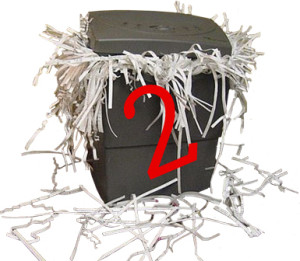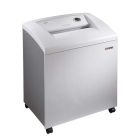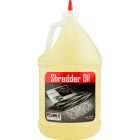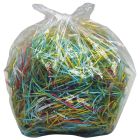Keeping Your Resume Out of the Shredder (Part Two!)

Okay, so let's say you've taken the time to really work out your resume. It's been proofed, well-organized, and tailored to fit the job to which you're applying. You can bet that this will definitely separate you from the majority of resumes coming in. Still, with the sheer volume of people looking for jobs these days, you're probably not the only one who has taken the time to put together a stellar resume. So, how do move your resume to the top of that short stack? Presentation.
Think about it. After you just spent all this time perfecting your resume on the computer, what's the very last thing you did? Hit print. And if you're thinking like everyone else, that's it. You're done. The thing is, you can't afford to think like everyone else.
Paper
The first thing you need to do is get some thicker paper. Don't use the cheap copier paper everyone has in their printer. You want to stand out, remember? You want your potential employer to hold your resume and physically feel a difference between the others he or she has sorted through. Believe it or not, a sturdy resume communicates that you're confident, serious about the position, and take pride in who you are. This automatically makes you a strong candidate.
Color
You don't want to go overboard with color. In fact, less is more. White paper is going to do the trick, but if you wanted to use a very subtle colored paper, it would be okay. Just use caution--anything too extravagant can hurt you by distracting from the content of your resume. The same can be said about colored ink. Straight-up black ink will get the job done. Colored ink should be used sparingly, if at all. At most, I'd consider only using colors for titles, headings, and possibly any minimal border or decoration. Again, less is more here.
Presentation Folders
Once you've printed your cover letter and resume, consider placing them in a pocket folder or presentation cover. This additional housing for your materials will not only protect them but give them a immensely professional look while, again, communicating your strength as a candidate.
The Digital Age
There's just one problem with all this advice, right? In this highly technological culture, most resumes and covers letters are sent via email. So, what's the point? Consider this: Many job postings still include a mailing address. Unless the application instructions explicitly say to use email, why not drop your resume and cover letter in the mail? Better yet, if the job you're interested in is local, make a trip to drop off your resume in person--this might be an excellent opportunity to meet your future employer and schedule an interview! I can tell you from personal experience that I generally have a slightly stronger connection to the candidates who give me physical resumes than the ones I simply read in my inbox. Their extra effort is undeniably impressive.
Finally, even if you can't get your prospective employer a physical copy of your resume initially, you'll have the chance when you're invited to interview. As an employer, I can tell you that the first thing I'm going to ask for is a copy of your resume, so be prepared! And remember, these strategies aren't a substitute for quality content in your materials--they can only highlight what's already there.
Good luck!









